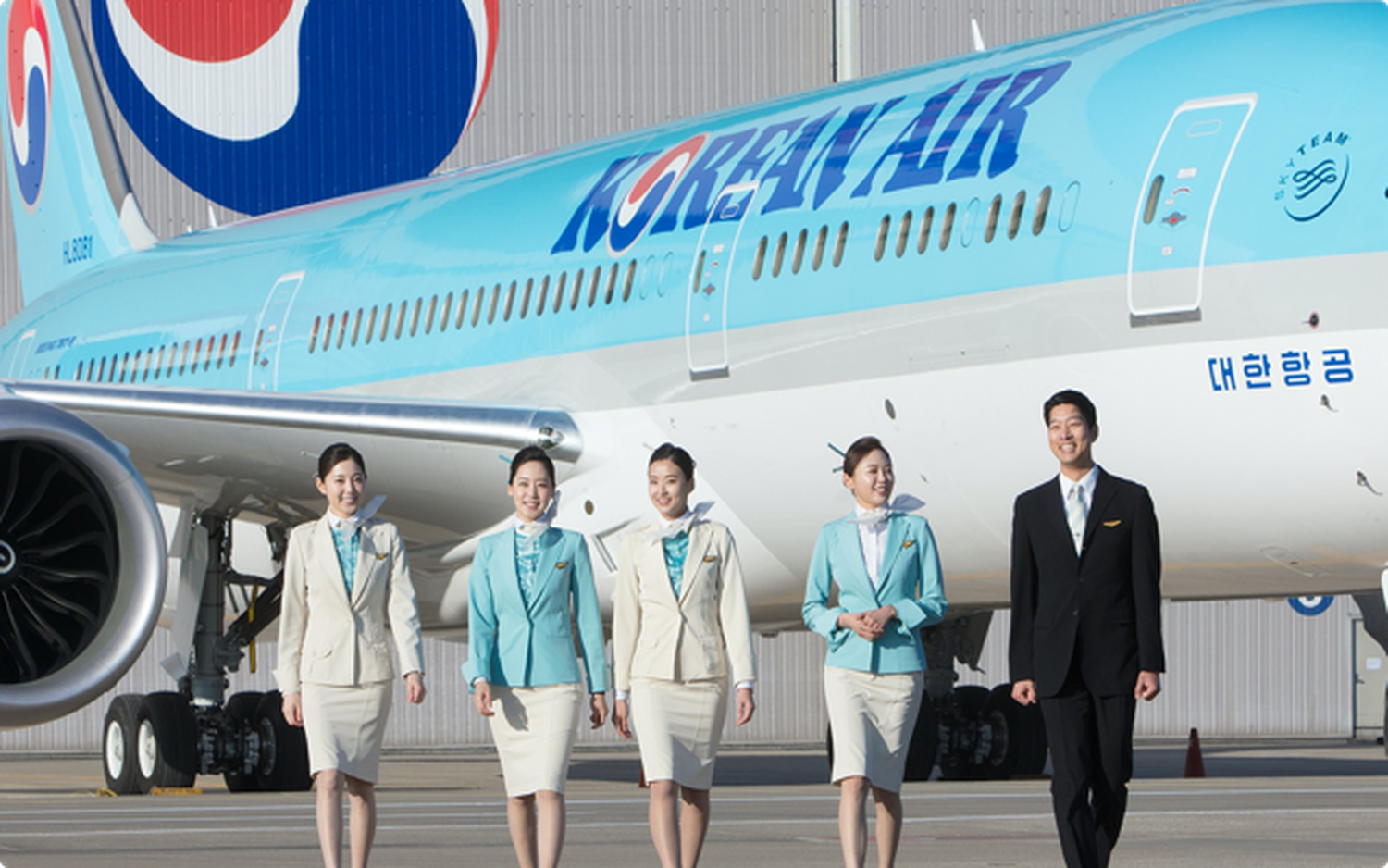Korean Air celebrates 50 years flying to the United States
Korean Air, celebrated on April 19 its 50th anniversary serving North America. The company’s first service was from Seoul – Gimpo (GMP) to Los Angeles (LAX) with stopovers in Tokyo and Honolulu operated on a Boeing 707. It now operates to thirteen destinations in North America from its main hub at Incheon Airport (ICN).

Transpacific market leadership
Since launching its first U.S. destination, Korean Air has become one of the leading airlines in the transpacific market.
In 1972, Korean Air moved 43,800 passengers between the United States and South Korea, over time the company eventually moved more than three million passengers between the two nations in 2019.
According to data obtained by Aviacionline through Cirium, prior to Covid the South Korean flag carrier during the summer season had an offer of 72,114 seats per week in 258 air operations.
The company started its transpacific operations with 171-passenger Boeing 707 aircraft, then with the introduction of the first-generation Boeing 747 it operated non-stop flights between South Korea and the United States. The company currently operates routes to North America with Boeing 787s and 777s and is awaiting the reactivation of Boeing 747-8i and Airbus A380s.
The service between Seoul – Incheon (ICN) and Los Angeles (LAX) in 2019 was the fourth busiest route between the United States and South Korea, according to information compiled by Aviacionline through the U.S. Department of Transportation (DoT) 997,058 passengers were mobilized between the two airports. Korean Air led the market with a twice-daily Airbus A380 operation and a supply of 11,396 seats per week.

Contribution to the U.S. economy
Over the past 50 years, Korean Air has contributed to the U.S. economy by boosting economic, social, and cultural exchange between the two nations through its passenger and cargo operations.
Prior to the pandemic, 1.1 million South Koreans traveled on Korean Air flights to the United States annually and spent an estimated $4 billion on their stay.
Dedicated cargo terminals at Los Angeles (LAX) and New York (JFK) support the company’s cargo operations, as well as that of other airlines. It is estimated that Korean Air has created 100,000 jobs and generated an economic impact of $17 billion over the past half century.

Korean Air a global airline
Since its launch to the United States, Korean Air has become one of the largest global airlines operating to more than 120 destinations in 43 countries. The company also founded the Skyteam alliance together with Aeromexico, Air France and Delta, the latter being its current transpacific Joint Venture partner connecting all its customers to 290 cities in the United States and eighty in Asia.
«As a proud joint venture partner, we would like to congratulate Korean Air on the important milestone of connecting the U.S. and Korea for half a century,» said Matteo Curcio, Delta Air Lines vice president Asia Pacific.
«We look forward to working together to seamlessly connect more customers between the Americas and Asia through our Incheon hub in the coming years,» Curcio added.
According to data obtained by Aviacionline through the DoT, 5,732,598 passengers were flown between the U.S. and Seoul – Incheon (ICN) in 2019, where it ranks as the 10th busiest international and second busiest Asian destination in the United States.
Korean Air North American schedule for the 2022 summer season
With the opening of borders in South Korea, the company will restore all its pre-COVID operated destinations for the boreal summer of 2022.
From Seoul – Incheon (ICN)
- Atlanta (ATL) daily flights on Boeing 787-9 Dreamliner.
- Boston (BOS) daily flights on Boeing 777-300ER.
- Dallas/Fort Worth (DFW) five weekly flights on Boeing 787-9 Dreamliner.
- Honolulu (HNL) daily flights on Boeing 747-8i.
- Washington Dulles (IAD) daily flights on Boeing 777-300ER.
- New York (JFK) two daily flights on Boeing 777-300ER.
- Las Vegas (LAS) three weekly flights on Airbus A330-200, (restarts July 10).
- Los Angeles (LAX) two daily flights on Boeing 777-300ER.
- Chicago O’Hare (ORD) daily flights on Boeing 777-300ER.
- Seattle – Tacoma (SEA) daily flights on Boeing 777-300ER.
- San Francisco (SFO) two daily flights on Boeing 777-300ER.
- Vancouver (YVR) daily flights on Boeing 787-9 Dreamliner.
- Toronto – Pearson (YYZ) daily flights on Boeing 787-9 Dreamliner.
From Tokyo Narita (NRT)
- Los Angeles (LAX) daily flights on Airbus A330-300.



Comentarios
Para comentar, debés estar registrado
Por favor, iniciá sesión